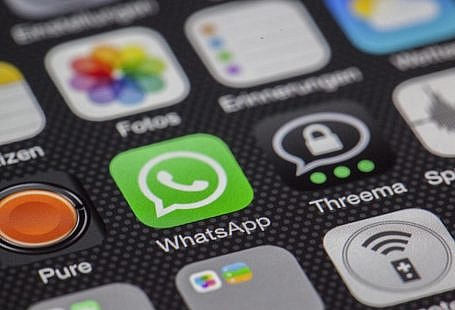We often exchange crucial information through text messages in the bustling digital landscape. Losing such vital information, whether due to accidental deletion or an unexpected phone crash, can be daunting. Users of Android phones are equipped with a vast array of messaging applications at their disposal, including the
universal Google Messages and various OEM-specific messaging apps. Understanding the intrinsic features and settings that influence retrieving deleted messages across these platforms is essential. This guide sheds light on these details, walking you through the available remedies and steps to resurrect your lost texts and avert future crises.
Factors Affecting the Possibility of Message Retrieval
Retrieving deleted messages is a nuanced process influenced by various factors. Some of the determinants include:
- Backup settings: Your phone’s backup settings are pivotal in message retrieval. The nature of the backup solutions implemented can either facilitate or hinder recovery processes.
- Messaging App: Different apps have varied functionalities. Understanding the features and limitations of your messaging app is crucial.
- Time Factor: The time lapse since the deletion of the message can be a decisive factor; swift actions often yield better results.
- Message Status: Determining whether the message was archived or permanently deleted will dictate the recovery approach to adopt.
Understanding these dynamics gives you a fighting chance on the battlefield of data retrieval, empowering you with the right strategies to reclaim lost texts.
Options for Retrieving Deleted Text Messages on Android
Android platforms offer a rich tapestry of solutions for recovering deleted messages. Let us unpack these options, delving deep into features like Google Drive backup capabilities and the utilities of third-party recovery apps. You can also contact [email protected] via this mail to retrieve your text messages. You can also get help from http://thehackway.com/. They are highly trained in this sector. Talk to them and get stress-free in no time.
Recovering Texts in the Messages by Google App Archive
The Google Messages app offers a sanctuary for your texts by enabling you to archive messages instead of entirely erasing them. However, the absence of a Recycle Bin feature means that recovery could be more straightforward. Here is a guided pathway to resurrecting your archived messages:
- Launch the Google Messages app.
- Navigate to the menu represented by three vertical dots at the top right corner. 3. Choose “Archived” to unveil the trove of archived messages.
- Here, you can resurrect the messages you wish to retrieve.
Finding Deleted Texts in Samsung Galaxy Phones
Samsung Galaxy phones have fortified their messaging app with a unique lifebuoy — a Recycle Bin that holds onto your deleted messages for 30 days. Let’s navigate the path to recovering these messages:
- Initiate the Samsung Messages app.
- Tap on the menu symbolized by three vertical lines and venture into “Settings.” 3. Herein lies the gateway to your deleted texts — the “Trash” option. Engage to rediscover lost messages.
- Handpick the messages you desire to recover within this grace period of 30 days, breathing life back into them.
Accessing Deleted Texts Through Mobile Carriers
Mobile carriers might hold the keys to your recovery efforts. Some carriers offer backup solutions, potentially assisting in resurrecting lost messages. Moreover, government agencies employ sophisticated tools for data retrieval during investigative processes, signifying the existence of advanced recovery solutions, although accessible for grave legal proceedings only.
Using Third-Party Data Recovery Software
Third-party data recovery software can rescue you when the built-in recovery options are exhausted. Google Play Store hosts various applications, including renowned names such as Dr.Fone, EaseUS MobiSaver, and PhoneRescue. These applications promise to assist users in navigating the intricate pathways to retrieve deleted messages and more. Let’s delve deeper into third-party recovery solutions, evaluating their features, prerequisites, and utility in data recovery.
Features, Requirements, and Subscription Models
These recovery apps, like DiskDigger, GT Recovery, and SMS Backup & Restore, bear distinctive functionalities equipped with algorithms capable of deep-diving into your device storage to recover erased data. However, it is important to note:
- Features: Apps like Dr.Fone offer a rich suite of features, including deep scan capabilities to recover lost data.
- Requirements: Certain apps may require root access to your device, enabling them to scan every nook and corner for deleted data.
- Subscription Models: While some apps offer free versions, others might operate on a subscription model, providing enhanced features to premium users. Apps like PhoneRescue offer detailed solutions under various subscription tiers.
Step-by-Step Guide to Retrieving Messages
Now, focusing on the step-by-step process using one of the trusted apps available in the market:
- Research and Choose the Right App: Start with meticulous research and opt for well-reviewed apps such as EaseUS MobiSaver or Dr.Fone.
- Install the App: Download and install your chosen app from the Google Play Store. 3. Grant Necessary Permissions: The app will request various permissions during its initialization. Granting these will facilitate a smooth recovery process.
- Select the Type of Data to Recover: Apps like GT Recovery offer you a list of data types that can be recovered. Choose ‘Messages’ to focus on retrieving deleted texts.
- Initiate the Scanning Process: The scanning process might take a while as the app traverses through the device memory to find deleted but retrievable data.
- Preview and Recover: Following the scan, preview the retrievable data. Identify and select the lost messages to recover them.
- Save the Recovered Messages: Save the recovered texts securely to prevent future loss. Tips to Avoid Permanent Loss of Text Messages
Protecting yourself against losing essential text messages involves adopting strategic preventative measures. These tips steer you towards safer shores:
- Archiving messages: Cultivate the habit of archiving messages rather than deleting them, nurturing a safety net for your vital information.
- Google Drive backup: Embark on a journey to set up Google Drive backup, creating a fortress for your data. This mechanism works tirelessly in the background, safeguarding text messages without active engagement.
- Third-party SMS apps: The digital marketplace offers many SMS apps embellished with backup and recovery features, presenting robust solutions for data preservation.
Checking Text Messages on a Laptop or PC
Embracing the habit of regular data backups is a cornerstone in safeguarding your data. Additionally, utilizing platforms like Google Messages on your computer not only affords you easy and expedited access to your messages but also crafts a secondary reservoir for your data, further insulating you from data loss. Let’s delve deeper into these protective measures:
Setting up Google Drive Backup
Carving out a fortress for your data involves initiating a Google Drive backup for your messages. Here’s a step-by-step guide to forging this shield:
- Launch your phone settings.
- Steer towards “System” and then sail to “Backup.”
- Engage the “Back up to Google Drive” toggle, lighting the beacon that guards your data. 4. Remain vigilant by regularly scrutinizing your backup status, ensuring a continual shield against data loss.
Conclusion
In conclusion, traversing the landscape of Android messaging involves navigating through a complex web of applications and features, each offering different levels of protection and recovery options for your text messages. By understanding and leveraging the extensive functionalities ingrained in Android devices, users can recover lost texts and erect formidable defenses against future losses.
As we wrap up, we encourage readers to actively engage with the preventive measures outlined, fostering a culture of data preservation. Remember, the key to data security is a proactive stance, a continuous effort to shield and safeguard your text messages, and nurturing a secure and stress-free messaging experience.
Follow TechStrange for more Technology, Business, and Digital Marketing News.





